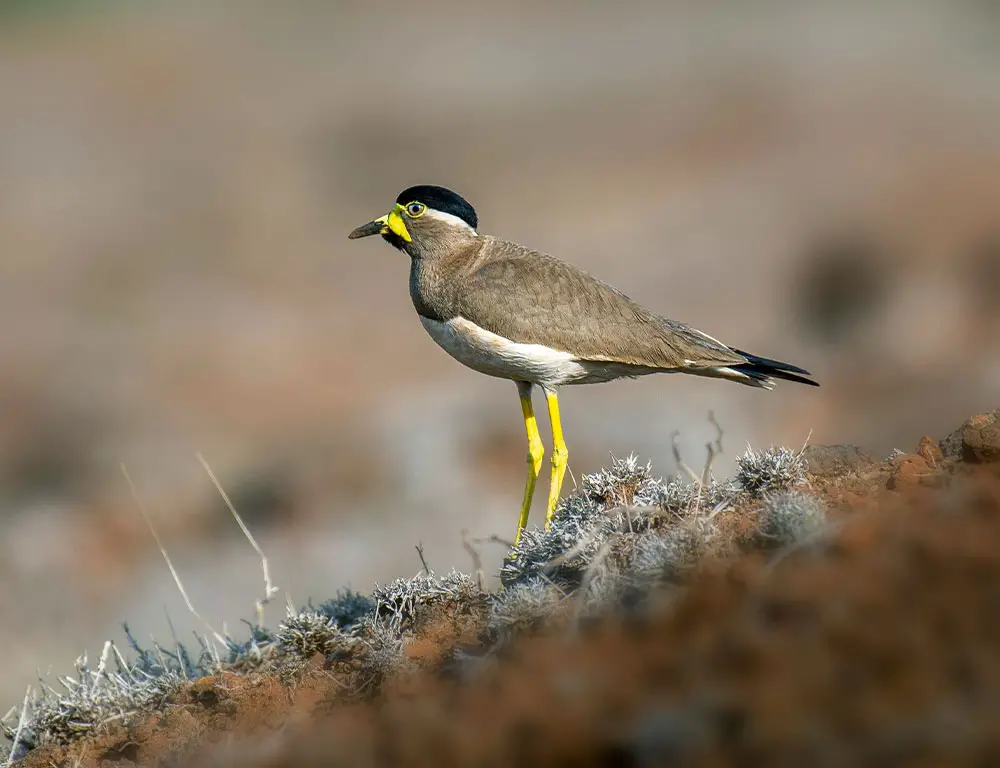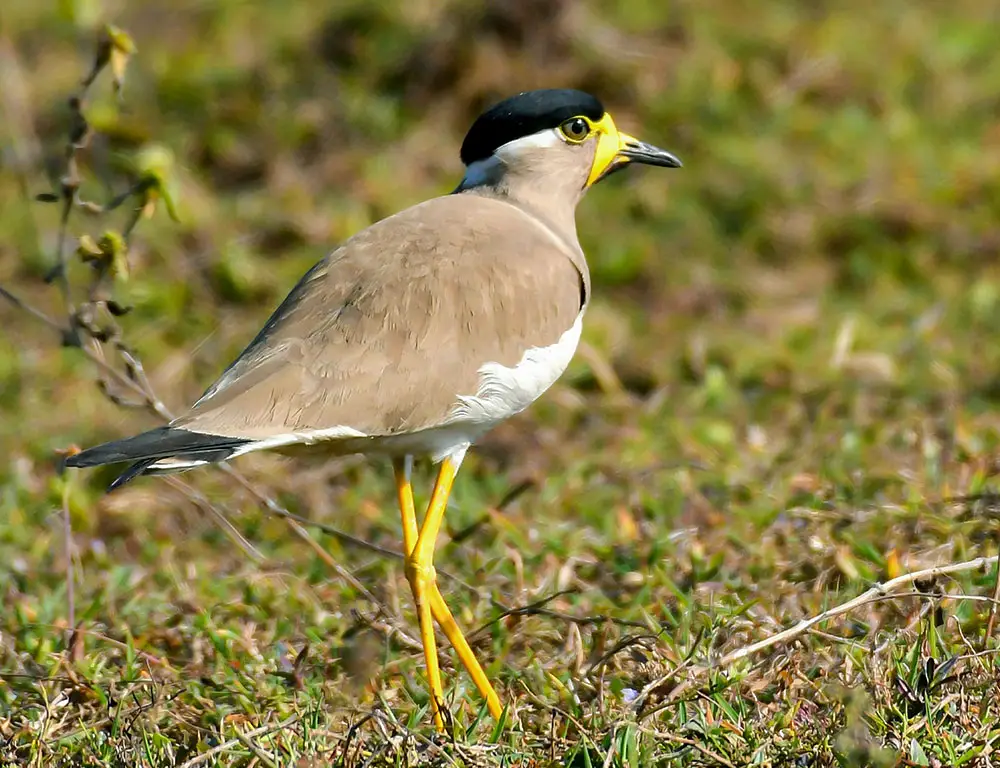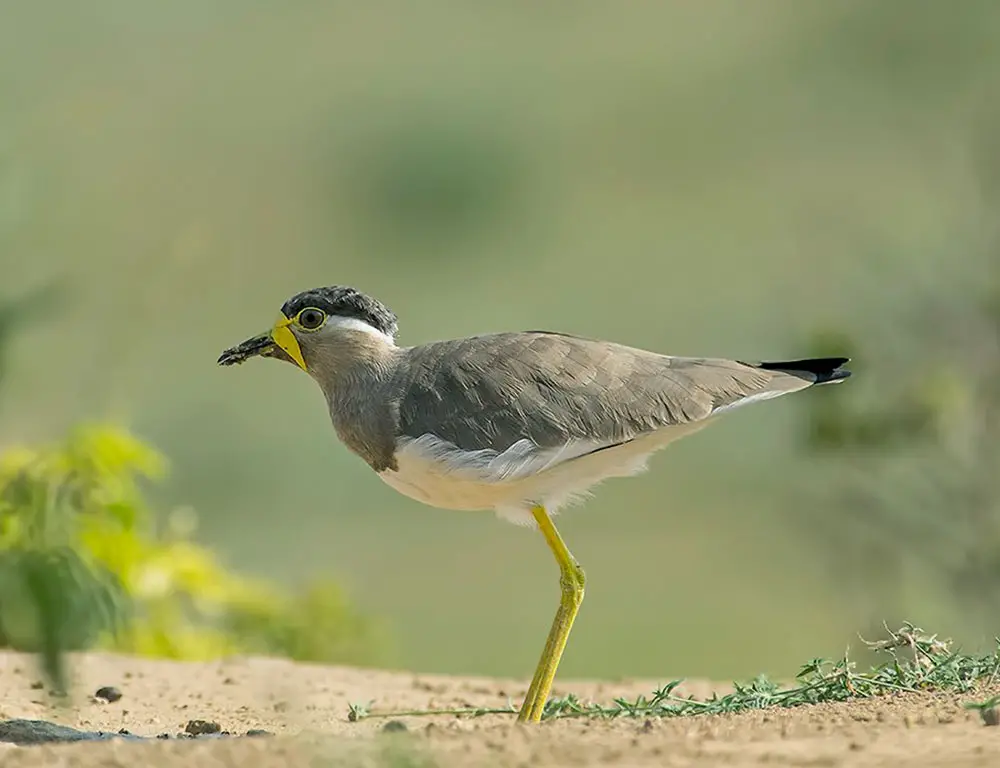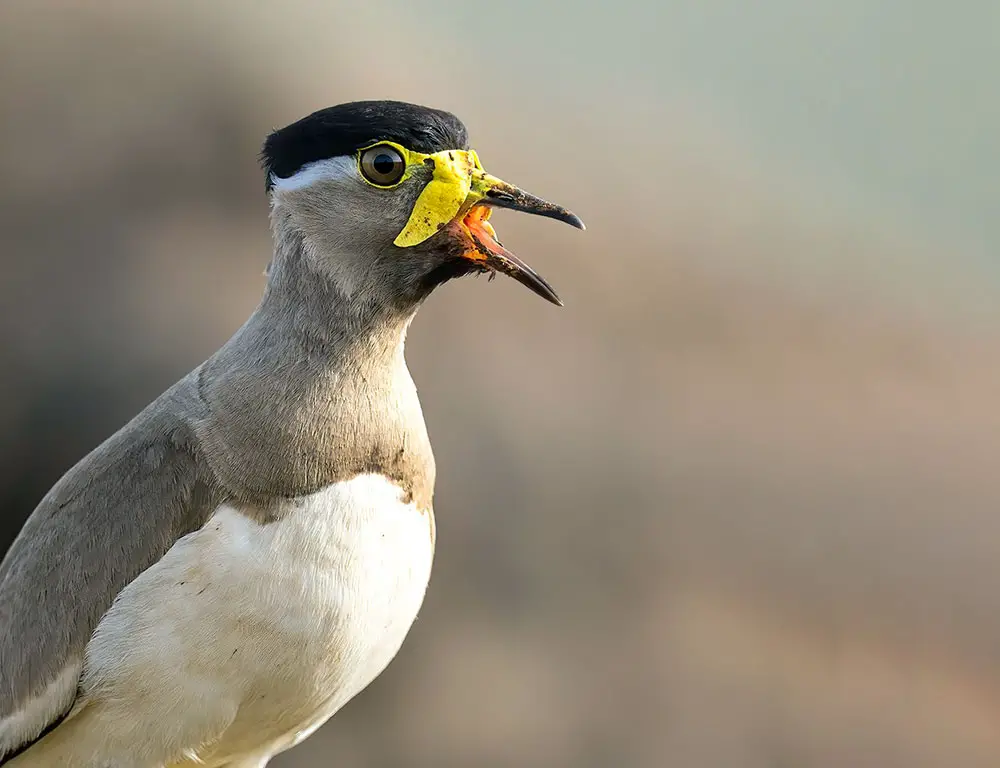The Yellow-Wattled Lapwing, native to South Asia, is captivating with its striking appearance and intriguing behaviors.
Found across countries like India, Pakistan, Nepal, Sri Lanka, and Bangladesh, this bird stands out with its distinctive yellow facial wattles, serving as an aesthetic feature and a vital tool for communication among its kind.
Adaptable to various habitats, from dry open country to wetlands, the Yellow-Wattled Lapwing showcases resilience in diverse environments. However, human activities threaten its existence, making conservation efforts imperative for its survival.
As stewards of nature, it is our responsibility to champion initiatives to protect and preserve the Yellow-Wattled Lapwing and ensure its continued presence in our ecosystem.
Physical Characteristics of the Yellow-Wattled Lapwing

The Yellow-Wattled Lapwing possesses several distinctive physical characteristics that contribute to its unique appearance and adaptation to its environment:
Yellow Facial Wattles
These fleshy lobes hanging down from its cheeks are the bird’s most prominent feature, giving it its name and making it easily recognizable.
Body Coloration
The body of the Yellow-Wattled Lapwing is primarily grey-brown, with white undersides and a black cap on top of its head. This coloration helps it blend in with its surroundings while providing contrast for visual recognition.
Legs
The bird has long, yellowish-green legs well-suited for traversing through grasslands and marshy areas, its typical habitat.
Size
Standing at approximately 25-30 cm (9.8-11.8 inches) tall and weighing between 110-150 grams (3.9-5.3 ounces), the Yellow-Wattled Lapwing strikes a balance between being light enough for flight and sturdy sufficient for ground mobility.
Wings
The broad wings span around 75 cm (29 inches), enabling efficient flight. During flight, the white patches against brown feathers create a striking pattern.
Habitat and Distribution of the Yellow-Wattled Lapwing

The Yellow-Wattled Lapwing, native to South Asia, occupies a specific niche within its habitat and demonstrates particular distribution patterns:
Native Range
The bird is primarily found in India, Pakistan, Nepal, Bangladesh, Sri Lanka, and Myanmar.
Preferred Habitat
Unlike other wader species, the Yellow-Wattled Lapwing avoids dense forest areas and high altitudes. Instead, it favors open-ground habitats like grasslands, dry fields, and scrublands.
Non-Migratory Behavior
Unlike many migratory bird species, the Yellow-Wattled Lapwing is sedentary, which remains within its established territories throughout the year. It does not undertake long-distance migrations.
Habitat Selection
These lapwings prefer dry habitats and are typically absent from areas near water bodies. They commonly inhabit agricultural fields and grazing lands, where their earthy-colored feathers allow them to blend in with the surroundings.
Local Movements
While they are non-migratory overall, Yellow-Wattled Lapwings may exhibit local movements within their habitat range, influenced by seasonal changes and food availability. These movements typically occur within their preferred open flatlands.
Behavior and Diet of the Yellow-Wattled Lapwing

The behavior and diet of the Yellow-Wattled Lapwing offer intriguing insights into the life of this bird native to South Asia:
Terrestrial Nature
Yellow-wattled lapwings are primarily terrestrial birds, meaning they spend much time on the ground rather than flying. They are agile walkers and runners, capable of swift movement to escape threats.
Territorial Behavior
Each pair of yellow-wattled lapwings maintains a specific territory during the breeding season. They exhibit territorial behavior, often using their distinctive yellow wattles in aggressive displays to defend their turf against intruders.
Dietary Habits
The diet of Yellow-Wattled Lapwings consists mainly of insects such as beetles, termites, and other small invertebrates. Additionally, they have been observed consuming grains, adding some plant matter to their diet.
Nocturnal Feeding
Unlike many other bird species that primarily feed during daylight hours, Yellow-Wattled Lapwings are also known to hunt for food at night. This behavior may be attributed to the increased activity of certain insects they prey upon after sunset.
Reproduction and Nesting Habits of the Yellow-Wattled Lapwing

The reproductive and nesting habits of the Yellow-Wattled Lapwing showcase fascinating adaptations to their environment and unique strategies for successful breeding:
Monogamous Bonding
Yellow-wattled lapwings form monogamous pairs, where a single pair remains together throughout the breeding season. This commitment ensures cooperation in raising offspring.
Courtship Dynamics
Unlike many bird species where males display to attract females, Yellow-Wattled Lapwings have an intriguing reversal of roles. Females perform courtship displays while males observe, indicating a distinct social dynamic within the species.
Nesting Site Selection
Nesting sites chosen by Yellow-Wattled Lapwings reflect their preference for open landscapes. They opt for flat ground devoid of tall vegetation, providing an unobstructed view of potential threats.
Nest Construction
The nesting behavior of Yellow-Wattled Lapwings is simple yet effective. They create shallow scrapes on the ground, often lined with tiny pebbles or plant matter, showcasing a minimalist approach to nest construction.
Egg-laying and Incubation
After nest completion, egg-laying commences, with clutches typically consisting of 3-4 speckled eggs.
Both parents share the responsibility of incubation, with the male often taking night shifts to ensure constant warmth and protection for the developing embryos. Incubation lasts for approximately three weeks.
Precocial Chicks
Once hatched, Yellow-Wattled Lapwing chicks are precocial, meaning they can run around just hours after hatching.
Despite their early mobility, parental care remains crucial, with both parents closely guarding and providing for the chicks until they are ready to fledge, typically around six weeks after hatching.
Conservation Status of the Yellow-Wattled Lapwing

The Yellow-Wattled Lapwing is classified as ‘Least Concern’ on the International Union for Conservation of Nature’s (IUCN) Red List, indicating that its population is currently stable with no immediate threat to its survival.
However, several factors warrant continued monitoring and conservation efforts:
Threats
Rapid urbanization and deforestation pose challenges to the Yellow-Wattled Lapwing’s natural habitat. Loss of suitable habitat can disrupt breeding and foraging patterns, impacting the species’ long-term viability.
Adaptability
While facing habitat loss, Yellow-Wattled Lapwings have shown adaptability by nesting in modified landscapes such as agricultural fields and golf courses. This flexibility may help mitigate some of the effects of habitat destruction.
Breeding Habit
The species displays a unique breeding habit, timing its reproductive cycles to coincide with the dry season when predator numbers are lower.
This strategy increases the chances of offspring survival and underscores the species’ resilience in environmental changes.
Population Trends
While comprehensive population studies specific to Yellow-Wattled Lapwings are limited, birdwatcher observations suggest stable populations across their distribution range. However, continued monitoring is essential to detect any changes in population trends.
Conclusion
Studying the Yellow-Wattled Lapwing has been both enlightening and informative. Their resilience and adaptability to diverse habitats and unique breeding habits highlight their remarkable survival strategies.
Despite being less renowned, these birds play a crucial role in our ecosystem. As threats like habitat destruction and climate change persist, it’s imperative to prioritize research and conservation efforts to safeguard their future.
By raising awareness and understanding the importance of every creature in nature, we can contribute to preserving biodiversity and maintaining the delicate balance of our environment.
The Yellow-Wattled Lapwing serves as a reminder of the intricacies and wonders of the natural world, motivating us to delve deeper into exploring and protecting lesser-known species.